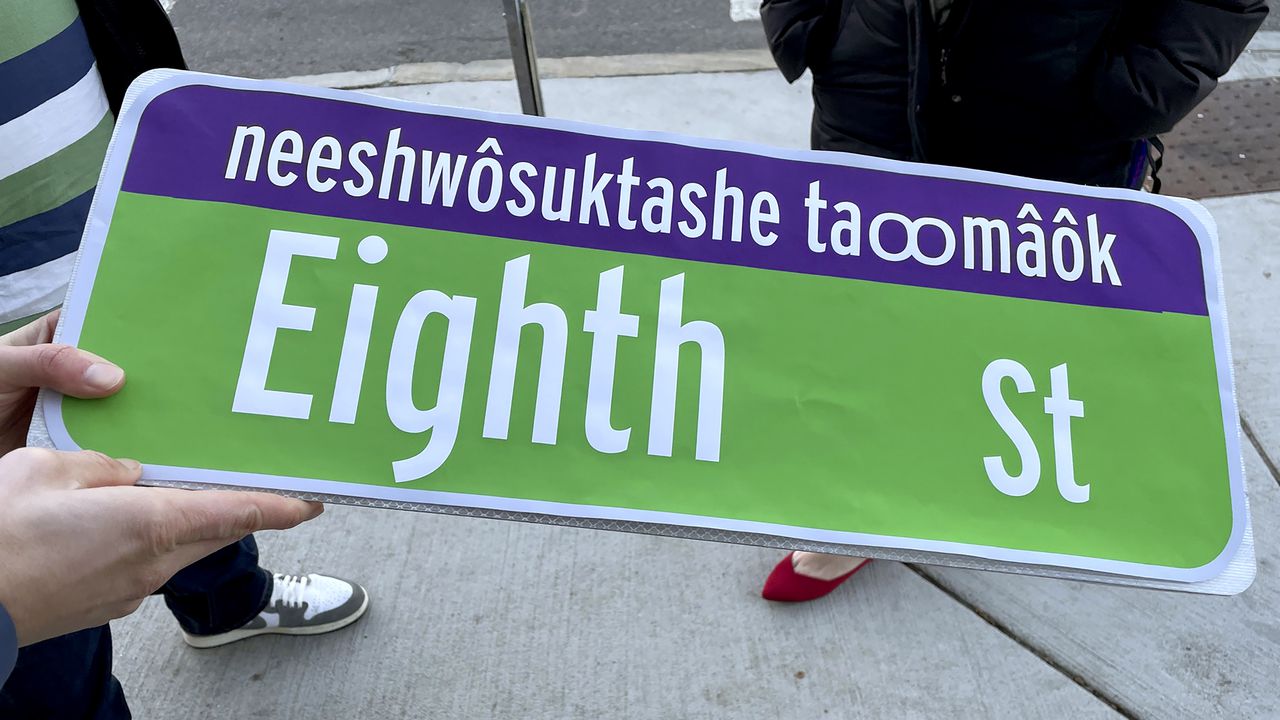CAMBRIDGE, Mass. (AP) — A few years back, Sage Brook Carbone was attending a powwow at the Mashantucket Western Pequot reservation in Connecticut when she noticed signs in the Pequot language.
Carbone, a citizen of the Northern Narragansett Indian Tribe of Rhode Island, thought back to Cambridge, Massachusetts, where she has lived for much of her life. She never saw any street signs honoring Native Americans, nor any featuring Indigenous languages.
She submitted to city officials the idea of adding Native American translations to city street signs. Residents approved her plan and will install about 70 signs featuring the language of the Massachusett Tribe, which English settlers encountered upon their arrival.
“What a great, universal way of teaching language,” she said of the project done in consultation with a a member of the Massachusett Tribe and other Native Americans.
“We see multiple languages written almost everywhere, but not on municipal signage,” she said. “Living on a numbered street, I thought this is a great opportunity to include Native language with these basic terms that we’re all familiar with around the city.”
Carbone has joined a growing push around the country to use Indigenous translations on signs to raise awareness about Native American communities. It also is way to revive some Native American languages, highlight a tribe’s sovereignty as well as open the door for wider debates on land rights, discrimination and Indigenous representation in the political process.
“We have a moment where there is a search for some reconciliation and justice around Indigenous issues,” said Darren Ranco, chair of Native American Programs at the University of Maine and a citizen of the Penobscot Nation. “The signs represent that, but by no means is that the end point around these issues. My concern is that people will think that putting up signs solves the problem, when in fact, it’s the beginning point to addressing deeper histories.”
Read the full article here

Leave a Reply